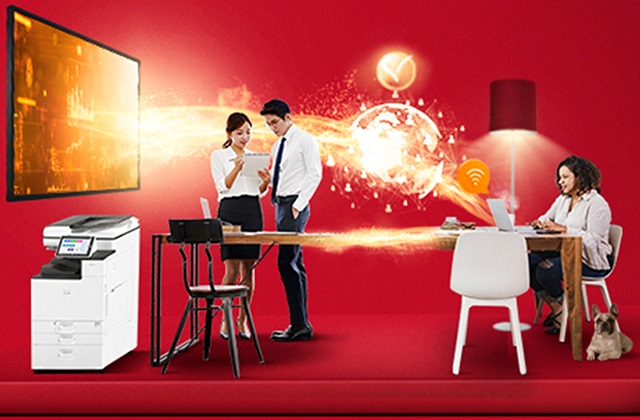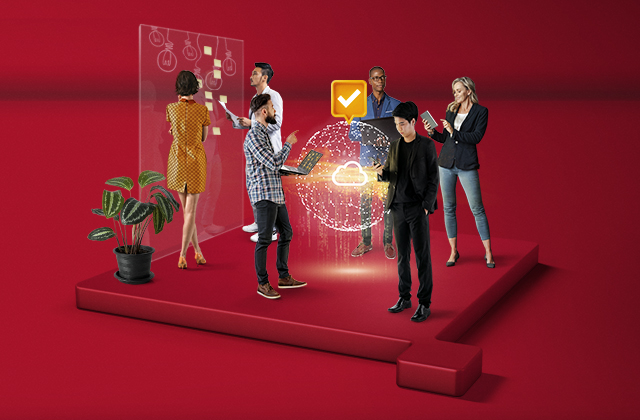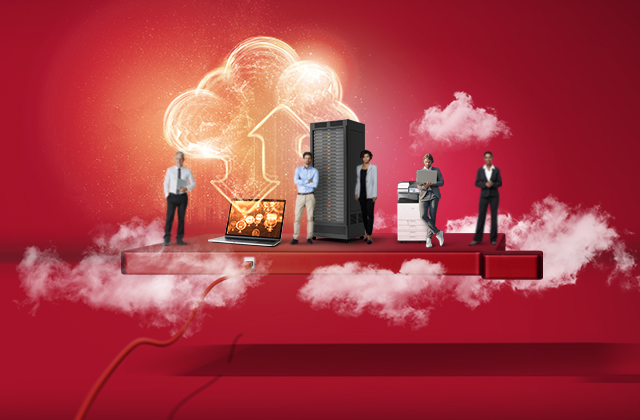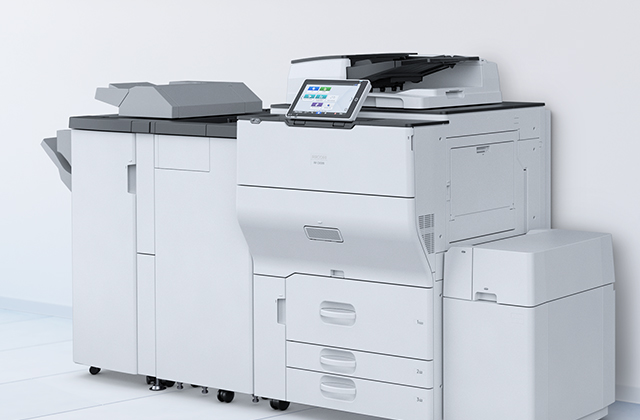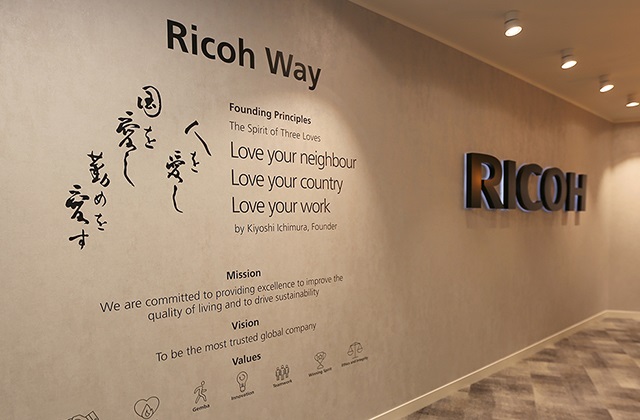6 ways managed print and automation services can help you create a sustainable print infrastructure

Most IT and Facilities departments are under increasing pressure to meet Environmental, Social, and Governance (ESG) targets. One of the key focus areas is decarbonising workplaces to achieve net zero. Therefore, to accelerate ESG transformation, there's an excellent opportunity to make improvements in an area that is sometimes overlooked: sustainable office printing.
To bridge the gap between the pressure to meet ESG targets and the practical steps needed to achieve them, IT and Facilities Managers are increasingly turning their attention to third-party suppliers. By partnering with these organisations, companies of all sizes can benefit from the latest, most eco-friendly print devices, and get insights into their print infrastructure to create an even more sustainable print environment.
How can managed print and automation services contribute to a more sustainable print infrastructure in your organisation?
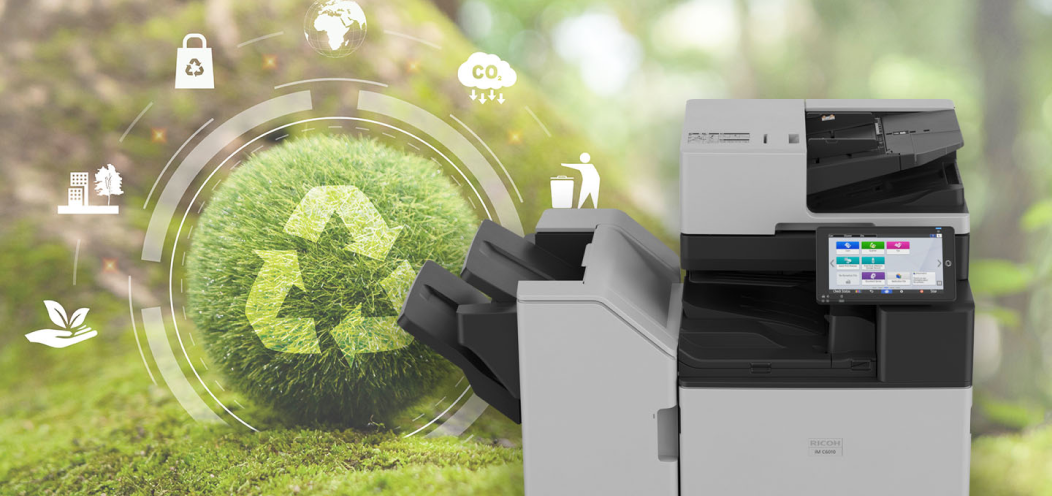
1. Cloud print infrastructure and analytics
Using cloud technology and advanced software, managed print and automation services reduces paper waste and energy consumption. Advanced analytics help you identify which printers are over or underused to maximise the efficiency of your print fleet. Some service providers offer detailed consumption reports, allowing you to implement greener printing policies. Regular software updates and predictive maintenance keep your printers in top condition, further contributing to sustainability.
2. Automated, digital workflows
According to data from The World Counts, paper waste makes up almost half of business waste. Modern printing devices support your company to reduce its paper use through scanning features that enable users to convert paper documents into digital files. These files can then be integrated into automated workflows in the cloud. Multi-function printers (MFPs) aren’t just printers; they are a gateway to digital transformation. Managed print and automation services can play an essential role in equipping your offices with these advanced, cloud-connected print devices, ensuring an efficient and sustainable print infrastructure. Users can choose to scan and convert paper documents into editable and searchable digital formats, cutting carbon and print costs. When printing is essential, software and services enable you to implement intelligent, sustainable print policies. For example, ensuring that all print jobs from Microsoft Outlook default to black & white and duplex.
3. Energy use
As technology evolves, so do the capabilities and efficiencies of office printing devices. Older printer models are less energy-efficient, contributing to unnecessary carbon emissions during operation and standby modes. You can make your print infrastructure more sustainable by choosing print devices with low Total Energy Consumption (TEC) values and energy-saving features. When building that infrastructure , it's important to consider the sustainability of the print devices. One way to assess this is by looking at the print devices’ TEC values, along with any additional energy-saving features and sustainability-focused services the provider offers.
Newer generation printers, such as our IM-C range, showcase advancements in energy efficiency. Boasting an industry-leading TEC value, our new range exemplifies how modern print technology can enhance performance and reduce a company's environmental impact.
4. Device manufacturing
The manufacturing of office printers inevitably involves the use of substantial materials, including plastics and packaging. Opting for printers manufactured under responsible lifecycle management practices can significantly contribute to your company’s sustainability efforts.
Managed print and automation services increasingly support circular economy principles through specialised device lifecycle management. This includes everything from initial setup and configuration to end-of-life retrieval and recycling. Some providers even use post-consumer recycled plastics in manufacturing to reduce the dependency on single-use plastics.
For example, our IM-C range, sets new benchmarks in sustainability. Made from at least 50% post-consumer recycled plastic and industry-leading energy efficiency, these devices offer the most sustainable printing solutions currently available.
5. End-of-life considerations
E-waste, which includes end-of-life printers and other electronics, is an escalating global concern. According to the Global E-waste Monitor 2020, the world generated 53.6 million metric tons of e-waste in 2019. By 2030, this number is projected to surge to a staggering 74 million metric tons, equivalent to the weight of 483 cruise ships.
Given these shocking statistics, choosing a provider with a strong focus on end-of-life sustainability is crucial for sustainable print. Look for providers with a "Zero Waste To Landfill" policy, such as the RICOH Resource Smart Return Program, to ensure that end-of-life printers, toner containers, and cartridges are recycled responsibly.
6. Carbon balancing
Even the most environmentally aware provider can’t ensure fully sustainable print without offsetting the carbon footprint of your print devices.
One of the methods that RICOH’s Carbon Balanced Service uses to help you achieve carbon balance printing is via quality carbon balancing projects. Our partner, the Climate Neutral Group, delivers these projects and ensures they meet the highest international sustainability standards, including the Gold and Verified Carbon standards.
Choose wisely for sustainability and partner with expertise!

Harald List
Director EMEA Product & Services Management, Ricoh Europe


